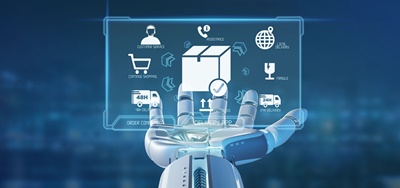Article by: Asst.Prof. Suwan Juntiwasarakij, Ph.D., MEGA Tech Senior Editor
องค์การอนามัยโลกได้ประกาศให้สถานการณ์เชื้อไวรัสโควิด-19 เป็นโรคระบาดครั้งใหญ่ ส่งผลกระทบร้ายแรงต่อบุคคล ครอบครัว และชุมชน ในขณะที่ยังไม่มีใครทราบว่าเมื่อการระบาดในครั้งนี้จะหยุด แต่สิ่งหนึ่งที่เกิดขึ้นและทุกคนรู้สึกได้คือ Supply Chain Disruption กำลังแผ่ขยายไปทั้งโลก ทั้งนี้เพราะการเชื่อมต่อสื่อสารที่ทั่วถึงและความซับซ้อนของเครือข่าย Supply Chain ที่ครอบคลุมไปทั้งโลก และ Disruption ดูเหมือนจะยังอยู่ไปอีกเป็นเวลาหลายเดือน

Source: COVID-19 Managing supply chain disruption, PwC
เนื่องจากความแน่นอนของสถานการณ์ ทำให้หลายอุตสาหกรรมในแนวดิ่งประสบกับปัญหาการชะลอตัว แต่กลับมีความต้องการที่เพิ่มมากขึ้นของอุปกรณ์ทางการแพทย์ อาหารบางประเภท และสินค้าชนิดบริษัทขายตรงต่อผู้บริโภคบางตัว ส่วนปัญหาความพร้อมของแรงงาน สายการผลิตที่หยุดลง และจุดการจำหน่ายและขายที่ปิดตัว ได้สร้างผลกระทบที่ร้ายแรงต่อบางภาคอุตสาหกรรมเช่น อุตสาหกรรมการผลิต ค้าปลีก และการขนส่ง ที่แย่ไปกว่านั้นคือ การพึ่งพิงระบบ Global Supply Chain ได้ก่อให้เกิดประเด็นปัญหาอื่นๆ ตามมา

Source: COVID-19 Managing supply chain disruption, Strategy & Analysis, PwC
ในขณะที่เชื้อไวรัสโควิด-19 อาจจะเป็นตัวเร่งให้บริษัทต่างๆ หันกลับมาทบทวนยุทธศาสตร์ทางด้าน Supply-Chain ของตัวเองและเร่งการนำโมเดลแบบ Digital Supply Network และศักยภาพของตัวเอง อย่างไรก็ดีบริษัทก็ยังต้องการมาตรการระยะสั้นเพื่อมารับมือกับความท้าทายอันใกล้นี้

Source: COVID-19 Managing supply chain risk and disruption, Deloitte
แรงกดดันทางด้าน Demand ทำให้หลายองค์กรถูกบังคับให้เร่งกระบวนการแปรรูปดิจิทัลให้เกิดขึ้นระยะใกล้ในขณะองค์กรอื่นมองว่าเป็นแผนระยะยาว โดยรวมแล้วคาดการณ์ว่าภาคอุตสาหกรรมต่างๆ จะมีการลงทุนในเทคโนโลยีมากขึ้น ไม่ว่าจะเป็น Cybersecurity ระบบ Cloud ระบบประสานการทำงาน ปัญญาประดิษฐ์หรือระบบวิเคราะห์ที่ก้าวหน้าและซับซ้อน ระบบอัตโนมัติ และ IoT

Source: COVID-19 Managing supply chain disruption, Strategy & Analysis, PwC
เพื่อที่จะอยู่เหนือการแข่งขัน ผู้ประกอบการต้องตอบรับและปรับตัวต่อวิกฤติอย่างมีชั้นเชิงและเป็นระบบ ไม่ว่าจะเป็นการเน้นย้ำความปลอดภัยของแรงงานและการรักษาความต่อเนื่องของการทำงานล้วนเป็นความสำคัญแรกที่จะต้องใส่ใจ นอกจากนี้ยังรวมถึงการบริหารต้นทุนเพื่อรับประกันสภาพคล่องทางการเงินในระยะสั้นอีกด้วย
มากไปกว่านี้สิ่งที่จำเป็นสูงสุดก็คือการทบทวนการให้บริการ โมเดลทางธุรกิจ และรูปแบบการทำงาน ที่จะเกิดขึ้นอนาคตให้สอดรับกับโลกแห่งความเป็นจริงใบใหม่ บริษัทห้างร้านสามารถที่รับมือเพื่อฟื้นฟูได้โดยการใช้เทคโนโลยีดิจิทัลเพื่อผ่าเผชิญวิกฤติและสร้างความได้เปรียบในโลกแห่งความเป็นจริงใบใหม่โดยเปลี่ยนการประสานการทำงานและการทำงานต่าง ๆ ให้อยู่ในรูปของระบบดิจิทัล เปิดใจรับโมเดลทางธุรกิจแบบ Digital-First และสร้างเสริมศักยภาพด้วยการสร้างคู่ค้าหรือการควบรวมกิจการ

Source: COVID-19 Managing supply chain disruption, Strategy & Analysis, PwC
ในขณะที่หลายอุตสาหกรรมเลือกเส้นทางแบบ “ Gradual Recovery” อย่างที่เห็นกันในการรับมือกับวิกฤตครั้งก่อน บางตลาดจะเลือกเส้นทางที่ต่างออกเป็นเส้นทางพิเศษที่เลือกนำมารับมือกับสถานการณ์ ตัวอย่างเช่น อุตสาหกรรม Telehealth หรือ Virtual Care จะเลือกเส้นทางแบบ “New Normal” ซึ่งมีความต้องการแบบสูงสุดในช่วงมาตรการปิดเมือง และมีแนวโน้มว่าความต้องการนั้นจะยังคงแม้ได้ผ่านพ้นช่วงนั้นมาแล้ว
ในทำนองเดียวกัน “Sugar Rush” เป็นอีกเส้นทางที่อุตสาหกรรมในกลุ่มเทคโนโลยีที่มีลักษณะเหมือน “New Normal” จะแตกต่างกันก็ที่ว่าสำหรับกลุ่มเทคโนโลยีนี้ มีแนวโน้มความความต้องการจะหดตัวในช่วงที่พ้นการปิดเมืองไปแล้ว แต่จะเป็นกลายแนวโน้มของตลาดในระยะยาวแทนเมื่อมาตรการการกักตัวได้ลดความเข้มข้นลงแล้ว ส่วนตลาด “Rebound” นั้นคาดว่าจะซบเซาในช่วงมาตรการปิดเมืองแต่จะกลับมาเบิกบานอีกครั้งหลังสิ้นสุดมาตรการ ทั้งนี้ก็เพราะว่าผู้บริโภคเลี่ยงที่จะใช้เงินในช่วงวิกฤตแต่จะกลับมาจับจ่ายอีกครั้งเมื่อสถานการณ์สงบลง

Source: COVID-19 Managing supply chain disruption, Strategy & Analysis, PwC












